It seems that there’s been a lot more rain this summer than there has been in a while here in Northern Canada, and with that extra rain comes extra mosquitoes. It’s not that their bites are the worst thing on the planet or anything, but I could do without the itching and swelling. Their annoying buzzing sound and the fact that they only seem to come in the house and find me while I’m trying to sleep (and therefore unequipped to see or kill them before they bite me most of the time).
Because of the increase, many articles have been floating around on my social media feeds lately with ways to keep the bugs away. If you haven’t ever tried to make a candle out of a citrus fruit peel before, I strongly suggest that you do – Not only do they keep the bugs away, but they smell so good. Just make sure that you don’t let the flame out of your sight for too long – They do have the potential to catch fire.
What I haven’t seen a whole lot of are articles dedicated to home remedies for the awful itchy lumps that are left behind after you’ve been bitten. So, after looking around the internet and browsing a few of my home remedy books, I’ve compiled a nice list for all of you wonderful readers! The best part is, you’ll probably already have most of these stocked either in your kitchen or your all-natural first aid kit. So, without further ado, I present you with…
11 All Natural Ways To Stop The Itch Quick
Baking Soda
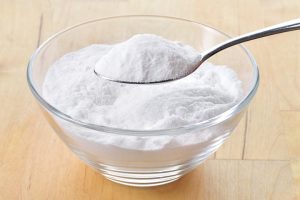
An alkaline solution seems to be pretty effective at getting rid of the itchiness of a bug bite, and as long as you have baking soda on hand, you have everything you need.
While I’ve never tried a paste personally, I can attest that having a baking soda bath gets rid of the itchiness and swelling relatively quickly, so I have no doubt this works.
How To Use It
Simply mix about a tablespoon of baking soda into a pint of warm water and apply it to the affected area with a cotton swab (your fingers will work just as well as long as your hands are clean though). Leave the solution for a few minutes and then rinse with warm water.
Vinegar

I read in a few different places that any type of vinegar can be used to stop the itching and help the swelling go down, but I haven’t personally had any luck using white vinegar. However, apple cider vinegar seems to do the trick every single time!
How To Use It
As a paste: Mix cornflour and ACV into a paste and apply gently but liberally to the bites. Leave on until dry and then rinse it off with warm water. Bonus Tip: If you cover the goop with a Band-Aid and sleep with it on, the bite is almost always gone by the time you wake up.
By itself: Soak a cotton ball in the ACV (try to get some of the mothers on it if you can – that’s the stringy stuff – I find that’s what helps the most) and hold or tape the cotton ball onto the affected area for a few minutes (again, the longer, the better).
Alcohol
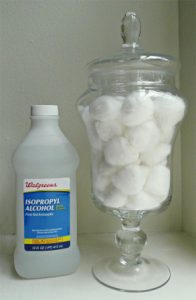
Applying a bit of rubbing alcohol does wonders for soothing itches. That stinginess will distract you from the itch and disinfects the spot, preventing the bite from getting infected.
If you don’t have any, you could find an alternative in you bar or liquor cabinet. Remember that you need to use a clear alcohol – scotch, whisky, or beer won’t do it.
How To Use It
Dab the alcohol on your bites with a cotton ball or q tip. By the time it’s dry the itch should be gone and the swelling should have gone down.
Produce
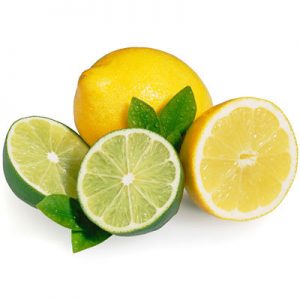
Since it’s summer and all kinds of fresh produce are in abundance right now, you probably have a lot of it hanging out in your fridge right now (because, really, who doesn’t love a fresh summer salad?).
There are quite a few different fruits and veggies that you can use to help relieve the itch, swelling, and pain of mosquito bites.
How To Use It
- Lemons and limes (or oranges if you’re in a pinch, though they don’t seem to work quite as effectively) can be cut into small pieces and placed on the bites. If all you have on hand is the juice, that’ll work too.
- Rub the inside of a banana peel on the bite(s).
- Cut a potato in half and place cut side down on the bite. The starch will dry over the bite and by the time it does you shouldn’t want to scratch your arm off anymore.
- Cut off a small piece of onion and rub it on the bite(s). The onion’s antiseptic properties will help pull the itch out and help the swelling go down.
- Rub plantain leaf on the area(s) after rolling it in between your fingers to extract the juice. Apparently this will cut your itching in less than a minute, but I’ve never tried it myself (please let me know in the comments section if you do, I’m curious as to whether or not it’s true).
Herbs & Spices
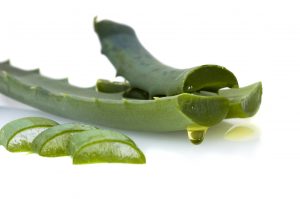
These are only going to work if you grow your own or buy fresh (except in the case of the aloe of course). If you’re in a pinch, you could try mixing dry spices with warm water to make a paste, but I doubt they’d also work.
How To Use Them
- Rub the gel from inside an aloe leaf directly on the bite. If you don’t grow your own aloe plants (you should, they’re super easy to grow and one of the best first aid plants out there), you can use the gel as long as it’s 100% pure.
- Make a poultice with witch hazel flowers and place on the affected area(s). If you don’t have the time to grow your witch hazel, at least invest in a bottle of it – It can soothe almost any skin irritation within minutes and makes an incredible toner.
- Crush some fresh basil leaves up and put the paste on your bite(s). The longer you leave the paste on, the better a job it’s going to do.
Food Scraps & Staples
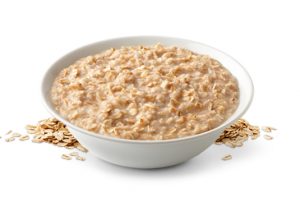
Who knew that so many random foods could help relieve the most common bug bite out there? Certainly not this girl! Anyway, here are a bunch more things you can find in your kitchen if you don’t happen to have any of the produce items mentioned above on hand:
How To Use Them
- Mix some meat tenderizer with some water, apply to the affected area and let dry. Meat tenderizer contains papain, an protein-digesting enzyme from papaya fruits, that’s able to break down toxins from bug bites.
- Take a little bit of your breakfast oatmeal and apply it to the bite. If you’ve ever had chicken pox or if you suffer from dry skin issues such as eczema, you know just how amazing oatmeal can be at relieving itch (mix a little dry oatmeal with warm water if you’re not eating it).
- Take some of the membrane from the inside of an egg and place it over your bite(s). As it dries it will draw out some of the toxins from the mosquito saliva and help the swelling go down. This is an especially handy tip if you get bitten while you’re out camping.
- Dab some honey on the bite. You’ll feel almost immediate relief (this is what I use when I run out of ACV).
A Penny

Pennies have been out of circulation for a while now, but if you happen to still have a couple around you might want to put them in a safe place so that you can use them to get relief when those pesky little brown flies bite you.
How To Use It
Just place the penny over the bite and leave it there for a little while. The copper should help draw out the itch and help the swelling go down; if it’s cold, it might help relieve the pain quicker.
Essential Oils
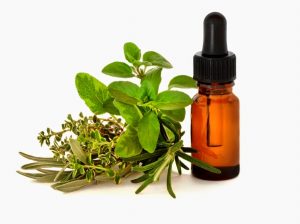
Of course, this wouldn’t be one of my “all-natural” lists unless essential oils were included. You can experiment with any that you have on hand (as long as you’re using a carrier oil, of course!), but I find that these two work just about every time:
How To Use Them
- Lavender: Apply directly to the area. This is one of the few essential oils you can use on your skin (without using a carrier oil).
- Tea Tree: Make an ice-cold compress with witch hazel and add a drop or two of the essential oil. Apply to your bite(s), and you should notice relief from the burning and itching almost immediately.
Mud

You’re more likely to get eaten alive by these pesky bugs (and all of their friends) if you’re camping, hiking, or spending a lot of time outside just about anywhere (especially when it’s muggy). Water and dirt make mud, and you might as well work with what you’ve got!
How To Use It
Find or make the mud and slather it liberally on your bite(s). Wrap it up with a bandage if you have one (more to avoid getting you and everything else dirty than anything else) and leave it to dry. Once it’s dry, rinse it off with warm water.
Heat
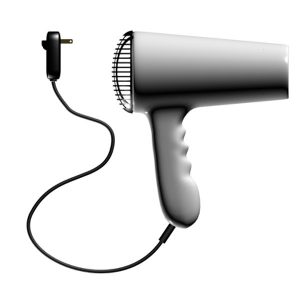
A lot of people seem to claim that heat can get rid of pain and itching quickly. Since there are a few different ways to use it, I’m sure that at least one of them should get you some relief if you don’t happen to have anything else on this list.
How To Use It
- A warm, dry cloth (or a warmed-up tortilla if it happens to be around lunchtime) will help exfoliate the area and relieve the itch.
- A blow dryer on low (or high if yours doesn’t run too hot) over the area will help disperse the histamines and stop the itching quickly.
- Running a spoon under hot water or placing a few of them in a cup of hot water and then placing the spoon(s) on your bite in thirty-second intervals should help get rid of the pain and swelling of your bites quickly. This would be handy if you had a couple of bites in the same area.
Water

Even if you have absolutely nothing on the above list on hand (which I would find hard to believe, but hey! Who knows? It could happen), you’ve probably got some water nearby. Use it to ease those bites and quench your thirst at the same time – There are a few different ways to do so:
How To Use It
- Run your tap ice cold and stick the affected area(s) under the stream.
- Have a hot bath. Add chickweed tea, ACV, or oatmeal to pump up the relief (for more detox bath recipes, click here).
- Make salt water by mixing sea salt with hot water and apply to your bite(s). Better yet, go for a swim if you live by the ocean.
- Dip a thick cotton wash cloth in hot water and apply the compress to the affected area(s).
- Melt an ice cube on the bite(s) or use an ice pack f you don’t like the idea of water melting all over you.
- Apply cooled tea to the bite(s). Apparently it doesn’t matter what kind of tea you use.
- Soak a sponge in water (with added witch hazel and lavender oil if you have them) and stick it in the freezer. Not only will this help ease the pain, itching, and swelling, it’ll also help cool you down on these hot and humid summer days.
No matter what kind of steps you take to help get rid of them, there’s a very slim chance that you won’t get bitten by a mosquito or two over the summer months (especially if you live in a more rural area), so the next time you do start to feel the itch of a bite, you’ll be able to get rid of it quickly and easily.
